
(photo by Emmy Andriesse)

Gerrit Bolhuis (Amsterdam, Netherlands, 23 June 1907 - Amsterdam, 19 November 1975) was a Dutch sculptor.


Gerrit Bolhuis (Amsterdam, Netherlands, 23 June 1907 - Amsterdam, 19 November 1975) was a Dutch sculptor.
Bolhuis was born in 1907 in Amsterdam. He studied at the Kunstnijverheidsschool Quellinus under the teachers Jan Bronner and Hendrik Adriaan van de Wal. He was the winner of the Dutch Prix de Rome in 1934. After a troublesome time joining, he was accepted at the Dutch Society of Sculptors. Many of his works were created after World War 2, due to his work being disrupted then. He died in 1975 and is buried in Amsterdam. He is considered popular in the Netherlands but unknown to the general public. [1] [2]
A popular work of his is a series of lamb statues near a fountain in the district of Osdorpplein, Amsterdam, made in 1966. [3] [4] In 1959, he made a statue of William the Orange that was previously on display in Willemsted, Curacao, before being moved to Breda. [5]

The House of Orange-Nassau is the current reigning house of the Netherlands. A branch of the European House of Nassau, the house has played a central role in the politics and government of the Netherlands and elsewhere in Europe, particularly since William the Silent organised the Dutch Revolt against Spanish rule, which after the Eighty Years' War (1568–1648) led to an independent Dutch state. William III of Orange led the resistance of the Netherlands and Europe to Louis XIV of France, and orchestrated the Glorious Revolution in England that established parliamentary rule. Similarly, Queen Wilhelmina of the Netherlands was instrumental in the Dutch resistance during World War II.
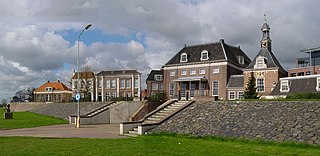
Tiel is a municipality and a town in the middle of the Netherlands. The town is enclosed by the Waal river and the Linge river to the South and the North, and the Amsterdam-Rhine Canal to the East. Tiel comprises the population centres Kapel-Avezaath, Tiel and Wadenoijen. The city was founded in the 5th century CE.
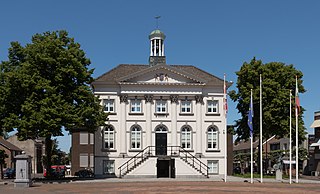
Zundert is a municipality and town in the south of the Netherlands bordering Belgium, in the province of North Brabant.

De Stijl, also known as Neoplasticism, was a Dutch art movement founded in 1917 in Leiden. De Stijl consisted of artists and architects. In a more narrow sense, the term De Stijl is used to refer to a body of work from 1917 to 1931 founded in the Netherlands. Proponents of De Stijl advocated pure abstraction and universality by a reduction to the essentials of form and colour. They simplified visual compositions to vertical and horizontal, using only black, white and primary colors.

Simon Carmiggelt was a Dutch writer, journalist, and poet who became a well known public figure in the Netherlands because of his daily newspaper columns and his television appearances.

Breda is a city and municipality in the southern part of the Netherlands, located in the province of North Brabant. The name derived from brede Aa and refers to the confluence of the rivers Mark and Aa. Breda has 185,072 inhabitants on 13 September 2022 and is part of the Brabantse Stedenrij; it is the ninth largest city/municipality in the country, and the third largest in North Brabant after Eindhoven and Tilburg. It is equidistant between Rotterdam and Antwerp.
Thierry Veltman was a Dutch painter, sculptor, ceramist, graphic artist and art educator. He focused in particular on figures and still life.
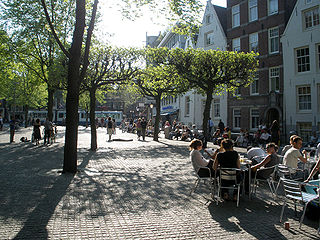
The Spui is a square in the centre of Amsterdam, the capital of the Netherlands.
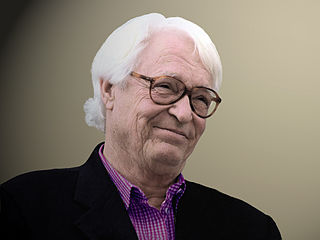
Korstiaan"Kees"Verkade was a Dutch artist and sculptor. He specialized in modeling the human form, with an emphasis on movement and emotion. Most of his sculptures are set in bronze. They depict a variety of people, including children, clowns, athletes, dancers, mothers, and lovers. Verkade also created gouaches and silkscreens to accompany his sculptures.

Willem Jan Knoop was a Dutch lieutenant-general, military historian, and politician. As a young captain of the Dutch General Staff he wrote a rebuttal of the British military historian William Siborne's account of the Battle of Quatre Bras and the Battle of Waterloo, published as History of the War in France and Flanders in 1815 in 1844, in which Siborne portrayed the conduct of the Dutch army at these battles as poor.

Gerrit Mannoury was a Dutch philosopher and mathematician, professor at the University of Amsterdam and communist, known as the central figure in the signific circle, a Dutch counterpart of the Vienna circle.

Martin Visser, born July 10, 1968, is a Dutch fashion designer and sculptor from Sleeuwijk, Netherlands.
The Free or High Lordship of Zuid-Polsbroek was a type of local jurisdiction with many rights. It's now part of Polsbroek in the Dutch province of Utrecht.

Jan Baptist Xavery was a Flemish sculptor principally active in the Dutch Republic. He produced portrait busts, large scale statues for residences and gardens, church furniture, wall decorations, tomb monuments as well as small scale statuettes in boxwood, lime wood, ivory and terracotta. The latter were made for elite collectors who liked to admire such objects in the privacy of their homes. He worked on various projects for William IV of Orange-Nassau, the Prince of Orange who later became the Stadtholder. He is regarded as the leading sculptor active in the Dutch Republic in the first half if the 18th century.
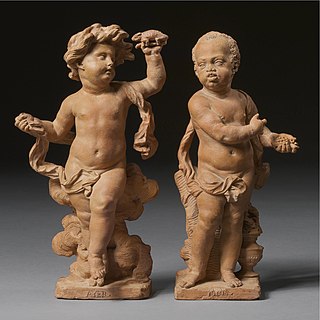
Jan Claudius de Cock was a Flemish painter, sculptor, print artist and writer. De Cock produced both religious and secular sculpture on a small as well as monumental scale. De Cock completed many commissions in the Dutch Republic. He worked on decorations for the courtyard of the Breda Palace for William III, King of England, Ireland, and Scotland and stadtholder. He is credited with introducing neoclassicism in Flemish sculpture. He was a prolific draughtsman and designed prints for the Antwerp publishers. As a writer, he wrote a poem about the 1718 fire in the Jesuit Church in Antwerp and a book of instructions on the art of sculpture.

Surinam, also unofficially known as Dutch Guiana, was a Dutch plantation colony in the Guianas, bordered by the equally Dutch colony of Berbice to the west, and the French colony of Cayenne to the east. It later bordered British Guiana from 1831 to 1966.

Bert van Loo was a Dutch sculptor, who mainly worked with glass. He was mainly active in the Netherlands and China.

Henricus Petrus Cornelis (Kees) Verschuren is a Dutch sculptor, painter and former lecturer at the Willem de Kooning Academie in Rotterdam, known for his monumentalist sculptures in public places in the Netherlands.
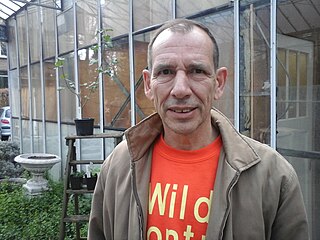
Bernardus Stefanus Henricus (Ben) Zegers is a Dutch visual artist, active as a sculptor and installation artist, and teacher and coordinator at the Gerrit Rietveld Academy.

The statue of Kwakoe in the Surinames capital Paramaribo is a monument commemorating the abolition of slavery. It was made by the sculptor Jozef Klas.